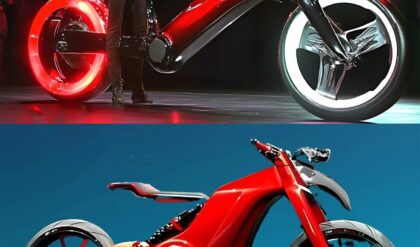“Though Dave Mustaine might claim he wrote Leper Messiah, he didn’t”: The track-by-track guide to Metallica’s Master Of Puppets
From Battery to Damage Inc., here’s the story behind every song on Metallica’s game-changing masterpiece

(Image credit: Ross Marino/Getty Images)
Metallica’s 1986 masterpiece Master Of Puppets is clearly a landmark, all-time-classic album – not just in metal, either. Puppets is a release as peerless and essential as anything ever released in the history of popular culture. In its entirety, it’s perfect – but what is it about the individual elements of the album that makes it so special? Here, Metal Hammer presents a deep dive into every track on one of heavy metal’s finest-ever achievements.
Battery
A love letter to the Bay Area thrash scene, Battery has become one of the genre’s most definitive songs: both furiously brutal and insanely fast, yet complex and vast in its scope. it’s made even more impressive by the fact that James Hetfield apparently improvised the song’s classic riff whilst fooling about on his guitar on tour. Covered by everyone from Machine Head and Dream Theater to Sum 41, this opener’s a nad-grabbing demand for attention that hooks you in for the seven other flawless songs to come.
Master Of Puppets

Puppets was one of metal’s most anthemic and essential songs long before it found a second-wind thanks to Stranger Things. Millions of listens down the line, this title track never fails to amaze. James Hetfield’s lyrics about an individual struggling to control their relationship with drugs (“Instead of you controlling what you’re taking and doing, it’s drugs controlling you,” he told Thrasher in 1988) are juxtaposed by brilliantly dizzying riffs. Metallica would run further with the more expansive songwriting ideas, but this remains possibly their most beloved and, dare we say it, best song.
The Thing That Should Not Be
Described by Lars Ulrich as “a great mood changer”, The Thing That Should Not Be marks one of the first times that Metallica truly leaned into the stomping, half-time crunch that would become their calling card post-Black Album. The Thing… also continues their love of cult US writer H.P. Lovecraft’s Cthulhu mythos, telling of a monster that roams the sea. That sci-fi universe had previously inspired the towering instrumental The Call Of Ktulu, which closed the band’s previous album, Ride The Lightning, in 1984.
Welcome Home (Sanitarium)
Welcome Home and later Puppets cut Orion were originally one song, but producer Flemming Rasmussen split it into two during the recording sessions. It was a good call. Having previously dipped into ballad territory with Fade To Black, Metallica continued to mine that approach further here – despite Lars Ulrich not deeming this one to be a proper ballad. Supposedly inspired by One Flew Over The Cuckoo’s Nest, Welcome Home paints a picture of a character incorrectly sectioned. “He feels, from his point of view, that he is sane,” Lars added.
Disposable Heroes
One of the thrashiest and most intense songs on Puppets, Disposable Heroes tells of a young soldier who’s being ordered to the frontline of battle by his superiors. Treatment of vets was a hot topic of conversation in the post-Vietnam America of 1986 and, in the years since, this rager has been adopted by many ex-military activists. Disposable… is also the Metallica song that current bassist Robert Trujillo loves the most. He once told Blabbermouth, “Any time I can hear that particular song, count me in!”
Lyrically calling out the hypocrisy of televangelist preachers, Leper Messiah is a choppy, staccato attack. Years later, ex-Metallica guitarist and Megadeth leader Dave Mustaine would claim he wrote much of what you hear – something now-guitarist Kirk Hammett has strongly denied since. “Even though Dave might claim that he wrote Leper Messiah, he didn’t,” Kirk’s said. “There’s maybe a chord progression that was in that song, like, maybe 10 seconds that came from him […] In fact, I remember being in the room when Lars came up with the main musical motif.”





